The closing chapter in this series on Phase Changes where we explore the idea that marketing is the art and science of removing or introducing friction into the marketplace
Parts 1, 2, 3 & 4 can be found here, here, here and here
Those of you who are familiar with these threads will know they are basically exercises in taking an idea and stretching it just to see what happens
Some fly off into the future. Others simply float nowhere.
This thread is one of those that measures how much we have forgotten rather than shedding light on the future
Marketing is about creating new markets
There is little to no friction in a new market
First come first serve
It's all about speed and agility. Gobbling up as much new territory as you can and quickly as you can
Once you have occupied the new territory you get busy building the moat and the ramparts to defend it
You introduce friction into the equation
All this means marketing is a simple game
Because the opportunity to create new markets is endless
It just takes imagination and investment
But you look at the world of marketing today and you discover it is complex
Today every company is a media company. Every company is a big data company. Every company is a tech company.
and you only have to look at the consistency in the quality of Microsoft's software, Google's search results and Disney's movies to know each of these objectives is crazy
If the market leaders struggle to consistently deliver on this promise what chance do you?
In truth every company is just fumbling around chasing the next trend
Following rather than leading
... and this is because the metrics of success, just like the sands, shift with each new wave of MarTech
At the beginning of this thread I suggested there is truth in the old adage you can only manage what you can measure but ultimately you become what you choose to measure
Today the world of marketing is awash with metrics
Some self imposed. The majority from external stakeholders.
I would argue to change the game you need to introduce new metrics
New ways of measuring success in the world of marketing
and I think these new metrics should focus on the challenge at hand
How do you measure your ability to create new markets?
How do you measure your ability to defend these new markets?
These are the questions worth exploring
and I think it comes down to the obvious questions
Firstly: What market offers the greatest expansion opportunity coupled with the least amount of friction?
Secondly: If we can secure this market what will it take to defend our position?
These are the strategic questions
They are questions of territory
and they point to the Art of Marketing being more akin to the Art of War than the Science of the Tea Leaves (Statistics and Big Data)
Where success comes down to your ability to read the landscape and how you deploy your assets
So if we begin to map the territory what does this map look like?
I suspect something like this
We scan the horizon to measure the variance between where we are today and the where we could be heading (ie How near or far away are we talking? & What is the level of friction we will encounter between here and there)
Then we cross reference that with the vibrancy of the landscape (ie How what's the growth potential of those opportunities?)
and then, on top of that 2x2 matrix we estimate the size of those new markets
So in one cube we have mapped the landscape of opportunity and the relative difficulty of capturing and servicing those opportunities
Entering a nearby rapidly growing market with a large Total Addressable Market (TAM) is optimal
Investing in a distant market that is already deaccelerating with a small TAM is sub-optimal
So the Territory Equation = TAM x Growth / Distance (from the brand)
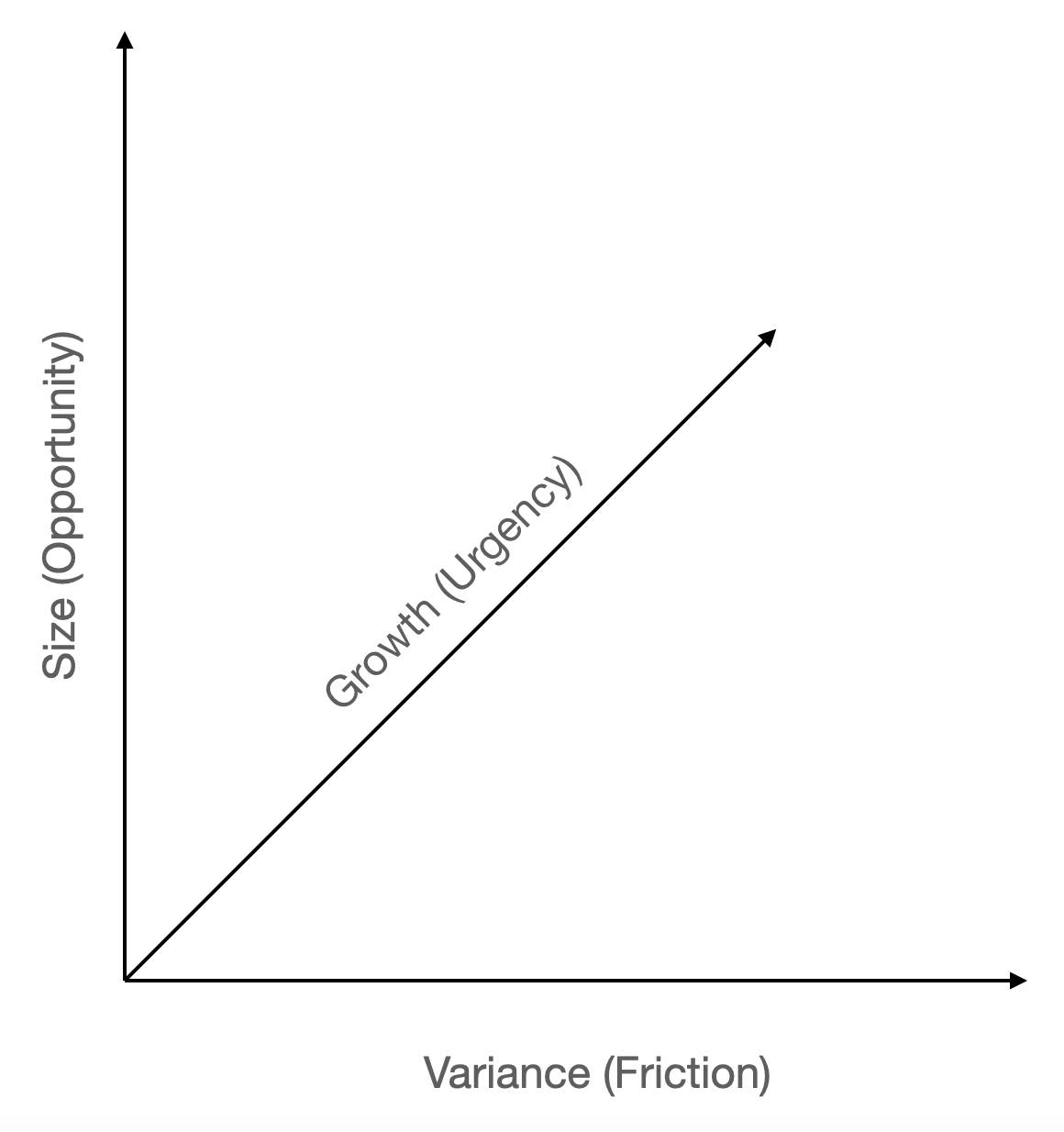
To put this into context let's take another look at the iPod as case study
In 2000 Napster grew its user based 10x (ie 14,000 Users) - Proof of strong growth for digital music
Sony had already sold 250+ Million Walkmans - Proof of global market
The distance between Desktop Computing and a Wearable MP3 Player was well within the Apple market horizon (Think: Newton PDA 1993-1998) - Proof of operational capability and brand elasticity
So the Territory Equation for the original iPod looked like this
iPod = 10 * 10 / 1
ie, 100
5 Years later the market for MP3 players was $4.5 Billion and Apple had secured a 30% market Share
In contrast when Apple released the Watch in 2015 Fitbit's growth (the market leader in health tracking wearables) in the previous year was 2.4x and they had already sold just under 17 Million units in the first 5 years
Five years on and the market for health trackers had grown from $1.5 Billion to $36.34 Billion with Apple again securing 30% of the market
So - once you factor in the growth prospects and TAM projections for the wearable market (eg similar to MP3) - the Territory Equation for the Apple Watch looked something like this
Apple Watch = 10 * 2.5 / 5
ie, 5
and this perhaps explains why, although it generated more revenue in the first 5 years, the growth trajectory of the Watch did not match the iPod
... there was already friction in the market
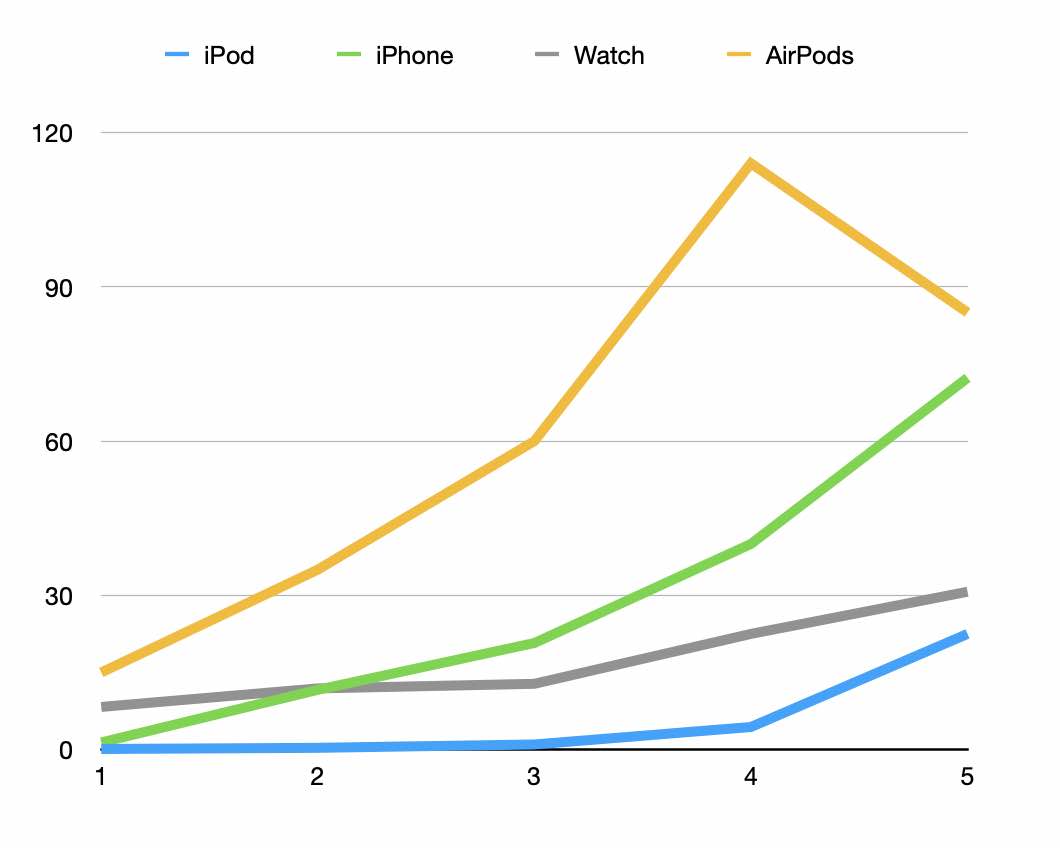
and we can expand on this idea to evaluate Google's GlassHole adventure
In 2014 when the prduct was launched there was no market for the product, no evidence of growth and Google had no history of developing computer hardware
Glass = 1 * 1 / 10
ie. 0.1
Then there is Amazon's 2006 AWS strategy
Cloud computing was emerging from the tech wreck of the Dot Com crash
Early entrant's like Loudcloud had come and gone in the aftermath of the crash
Amazon had spare capacity. Bundling it up as a cloud compute offering in retrospect seems self evident
Data Centers were scaling at 15% per annum between 2000-2005 and the world was already spend >$100 Billion in 2004 on hardware to meet demand
Map all this to the Territory Equation and we discover AWS = 30 x 0.15 / 1
ie, 4.5
This then is how you navigate the fitness landscape when planning your marketing strategy
and, yes you can use it for M&A evaluation
In the case of both the Instagram and YouTube acquisitions by Facebook and Google the equation read 20x Growth * 10x TAM * 1x Distance = 200
Meanwhile the ill fated Nokia acquisition by Microsoft would have equated to -0.22x Growth * 1x TAM / 5x Distance = -0.05
... and we can map those decisions across the Fitness Landscape and it becomes self evident which ones were going to be the winners and losers
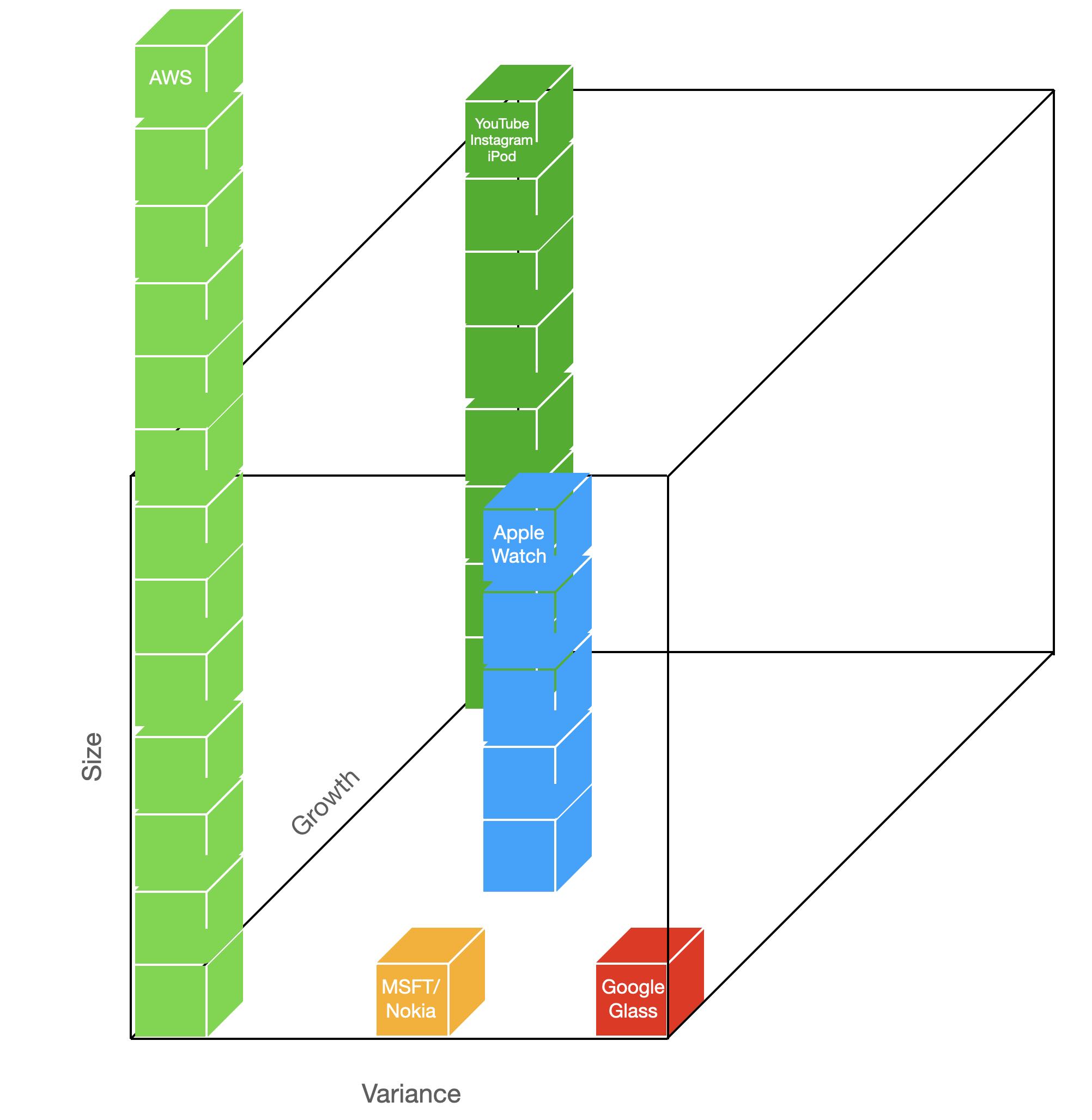
Basically it's a away of thinking
A way of seeing the market
A way of evaluating the gaps in market
A way of identifying where the quick wins can be found based on your capability to execute and the elasticity of your Brand
and if you struggle with thinking in 3-D you can always reduce the Growth/Scale metric into a single variable and map it to the variance to generate the more traditional Risk vs Return or Value vs Ease forecast matrix
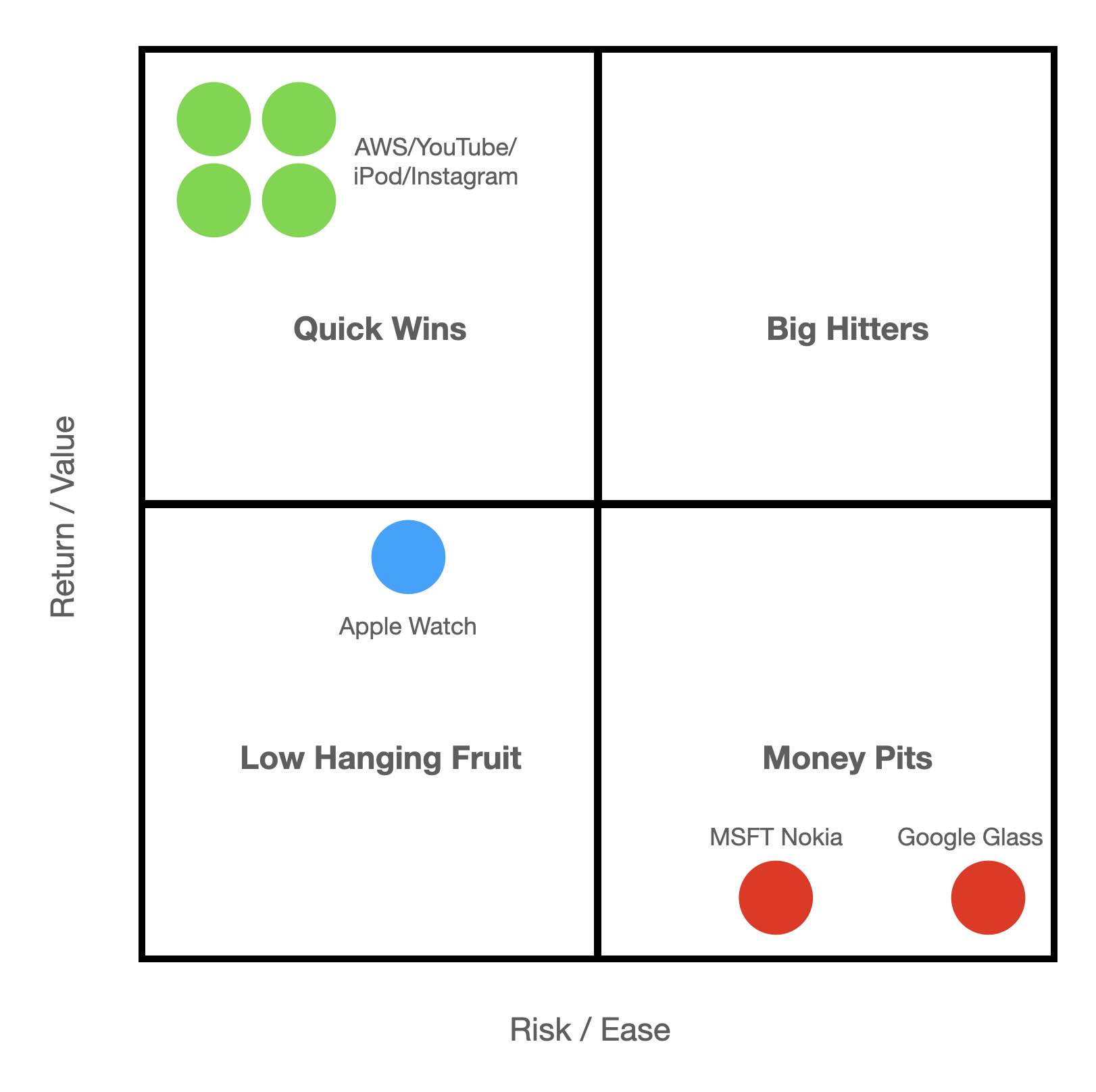
Or, you could make a subtle change the way you think and reimagine the 'Boston Box' as Growth Opportunity vs Friction
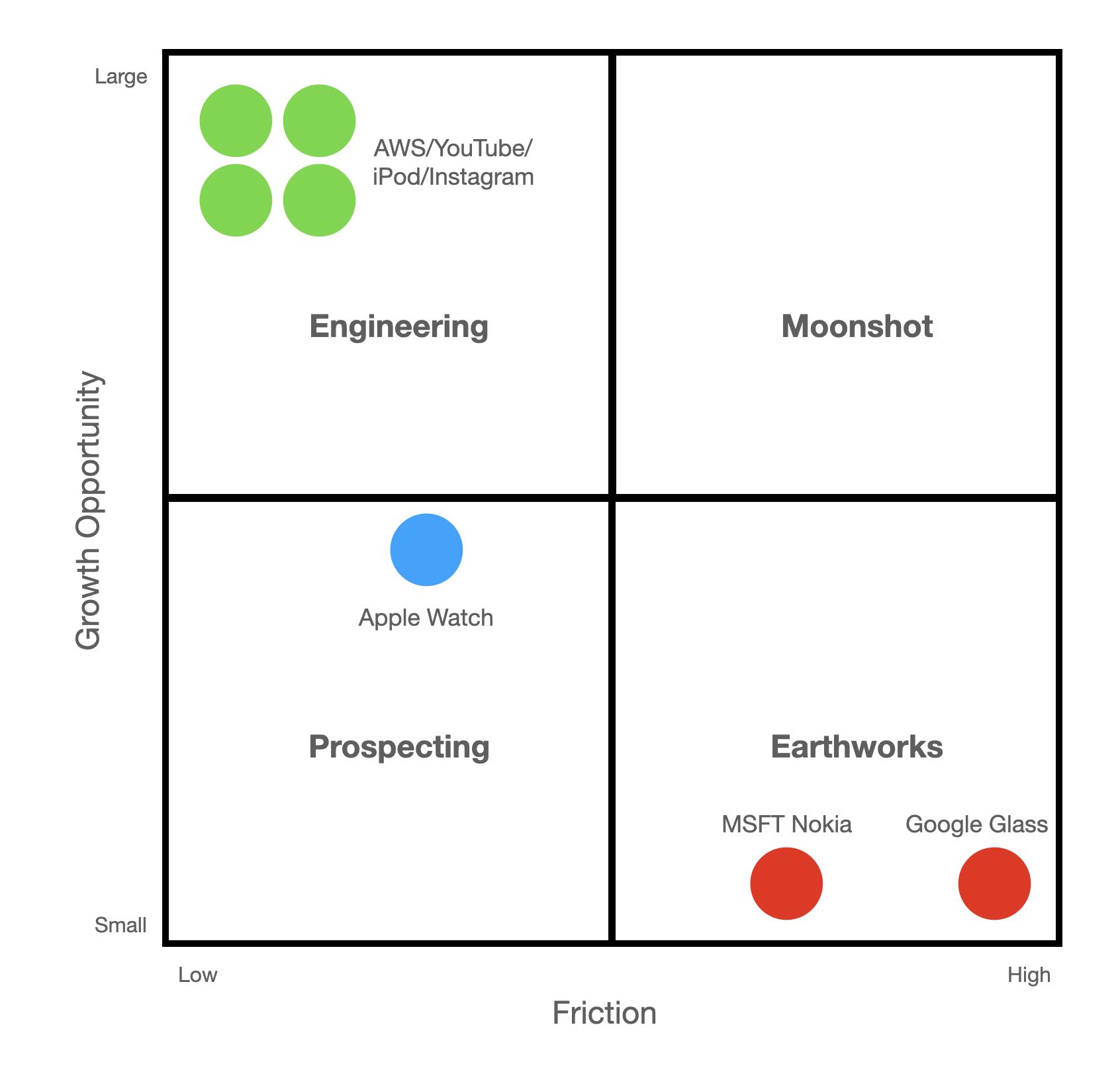
So I'll leave it there
I don't think it's a ground breaking insight
I wouldn't call it a new way of thinking
More like an old way of seeing
It's just stating the obvious
Marketing - particularly when you are managing a cash cow or transforming the old into something new - is about creating new markets
It's about discovering opportunities for frictionless entry and then closing the gate before competitors arrive
The best way to plan and measure your progress in creating new markets is to map and monitor the fitness landscape centered around your brand or product and figure out how you are going to expand into new markets
It's not rocket science... but then again I'm not too sure anything about marketing ever was
In closing the observation I want to make is the pivot Silicon Valley has imposed on the marketing profession
You see the trick they pulled was to convince the world that today every company is a media company. That every company is a tech company. That every company is a big data company.
and they did that by seeding the idea the opportunities available to everybody in this brave new world were unlimited and the transition was frictionless
Digital Media + Digital Tech + Digital Data = 21st Century Digital Success
Grow your business for free on Google, Facebook, TikTok, Twitter, LinkedIn, Snap, Pinterest, YouTube, Shopify, Mailchimp, Hubspot... etc - all you need to do is become a media company generating digital content and keeping an eye on the engagement stats
They took the frictionless pivot and turned it into a game everybody with a camera phone can play
and as each new player became hooked on playing the game the level of friction of not playing the game, of not being on the platfrom, of staying and investing more energy in the game, increased
The question moved from why would you be playing the game? To can you afford not to be playing the game?
They turned marketing into a game everybody with a smartphone and an app can play
and that my friends is pure marketing genius
So have a think about that... at least until the next time we attempt to deconstruct the new rules of marketing :)
Further Reading
The decay of corporations and an analysis of their business fitness landscapes